You still need a solid-performing transponder now that ADS-B Out is the rule. As proof, we’re hearing field reports of new and existing ADS-B Out systems flunking performance reports because of Mode C transponder issues. The lesson learned for those purchasing remote or add-on ADS-B Out technology is that nursing an aging analog transponder might not be even a short-term solution.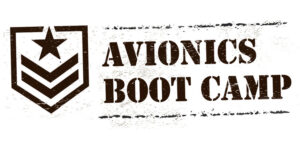
Luckily there are some affordable solutions, especially when carefully shopping the used market. If you have a new or existing kit to equip for the ADS-B mandate, you’ll pay a premium for a one-box solution, but it may be the better long-term plan. Here’s a scan of the current market.
Start at the Antenna
Since Mode A/C/S transponder performance relies so heavily on its L-band antenna system, that’s a good place to start. If you’re assembling a new kit, you have the advantage of running new low-loss and shielded coax cable and new antennas. Don’t skimp—we favor fiberglass blade antennas over the aluminum rod and ball design. Check the Comant CI-105 as one example of a proven blade model.
If you’re replacing an old transponder, still work your way up to the panel by starting at the antenna. If it’s a fiberglass antenna, check it carefully: Does it have cracks in the casing? If it’s in the line of fire of the exhaust stack it might even be melted, if not loaded with blow-by oil and grime. (Here’s a tip for you guys still building—don’t put any antenna immediately downstream of the exhaust or crankcase breather.) For best antenna performance, it pays to pull it off for a good inspection (and keep it clean) and consider changing the signal cable if it’s old RG58 (the black stuff). Even the best coax is prone to deterioration over time, especially if it hasn’t been secured properly or protected from moving parts inside the airframe.
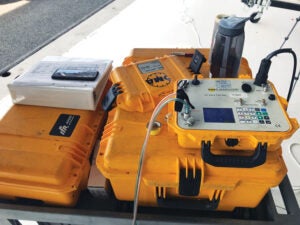
Outside Help
And if you’re simply unsure whether to replace the transponder or its supporting antenna system, take the airplane to a trusted avionics shop and pay close attention to the results of the system’s biennial certification, which is governed by FAR 91.413. During this test, technicians are looking for specific performance characteristics to determine the overall health of the system. Ask the shop if your system barely passed or fell well within specs—this is vitally important. Many issues related to poor performance are caused by old antennas and cabling as well as creaky transponders, and these tests will help you determine where to look and what to fix.
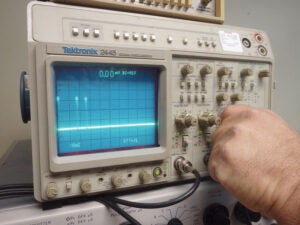
Don’t forget the Mode C altitude encoder—another critical component in the system. As a primer, our rule of thumb is to replace the encoder and the transponder at the same time. Encoder technology has improved over the years, with most current-production models requiring minimal warm-up time and infrequent calibration. Sandia even makes a transponder with integral encoder, while Garmin offers a tiny add-on module. Smart.
With all that said, let’s take a look at each manufacturer’s wares.
Appareo
This is the same company that makes the popular Stratus portable ADS-B receivers sold by Sporty’s. It earned certification for its Stratus ESG rack-mounted ADS-B transponder a few years ago. When Appareo began developing the ESG, it predicted (based on FAA stats) that NextGen equipage trends would favor 1090ES transponder solutions and it was right, especially given the aging fleet of Mode A/C transponders. But there was another strategy.
From the beginning, Appareo engineers were sharply focused on federated avionics interfaces, which are radio stacks that might have a variety of avionics brands, both old and new. It also focused on the price-sensitive, lower-end of the retrofit market. Many of these targeted buyers likely have Stratus portable ADS-B receivers, which boosts brand recognition.
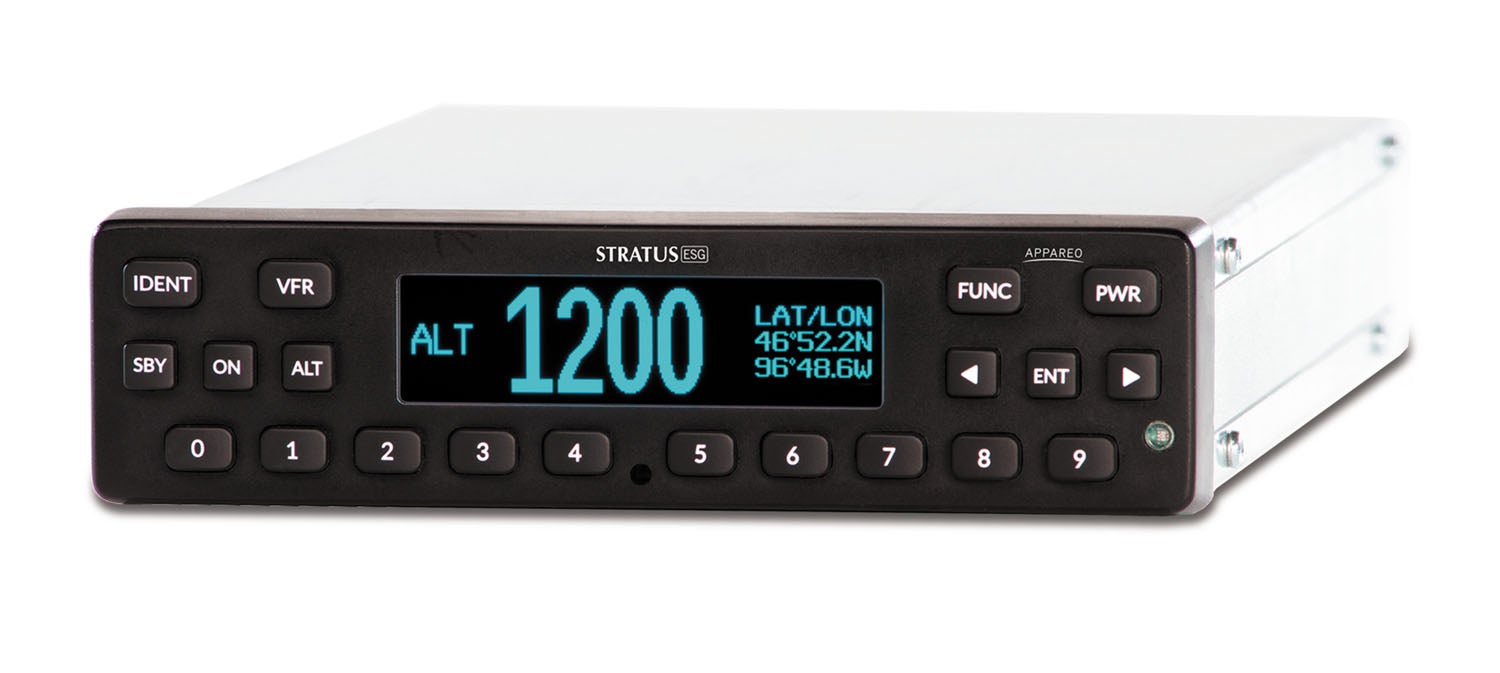
The Appareo 1090ES-based ESG transponder doesn’t have an internal ADS-B receiver, but it does have internal WAAS GPS, eliminating the need for an external GPS input. Also recognizing that buyers would want a seamless ADS-B In solution, Appareo designed the transponder to interface with a new hard-wired, remote version of the Stratus portable, called the 2i.
Unlike the models in the original Stratus line, the 2i isn’t portable and requires a connection to the electrical bus. The benefit is a cleaner installation—no wires strung across the glareshield and no windshield mounts to deal with. Mount it behind the panel or anyplace that’s convenient. Connecting the 2i (and also the portable 2S/3, with an optional interface wiring kit) with the ESG provides auxiliary power, GPS signal and also the ADS-B reception from external antennas. As with the portable Stratus receivers, the 2i displays traffic, weather and AHARS on the ForeFlight app through a Wi-Fi connection. Of course, if you want to move the Stratus portable receiver between aircraft, you’ll want the 2S. If not, we favor the 2i’s cleaner interface.
Appareo has two packages: The standalone ESG transponder with installation kit is $2995, and the ESGi (with the 2i receiver) is $3495. You won’t lose any features if you go with 2i over the 2S—just portability.
Avidyne
Avidyne’s full-stack retrofit avionics line includes the AXP340 transponder, which can be connected with the company’s IFD550/540/440 navigators for a WAAS position source. It’s also approved for use with Garmin’s GNS 430W/530W WAAS navigators, plus the newer GTN navigators.
The AXP340 has no built-in ADS-B receiver; you have to buy the company’s Skytrax receiver for that, which will display weather and traffic on the IFD navigators. It will also display on a wide variety of tablet apps, using the IFD’s built-in wireless transceiver.
The AXP340 is designed as a slide-in replacement for the Mode A and Mode C functions of the King KT 76A transponder, while also using the King’s mounting rack. Avidyne has a remote version of the AXP340 called the AXP322. Priced at $5450, the 1090ES AXP322 is controlled through the IFD navigators—a feature that does target Entegra/Garmin-equipped Cirrus models—because eliminating the transponder from the radio stack frees up space for the larger IFD550/540.
Becker Avionics
To our surprise, we learned in our research that Becker is out of the small-airplane transponder market. Known for its compact, space-saving chassis designs, Becker only offers a 1090ES ADS-B transponder solution for Part 25 aircraft, with a focus on law enforcement ops.
If you’re searching the used market, you might find the ATC-4401. It fits in a 2¼-inch instrument cutout and is shallow, at 1/8-inch deep. It’s fully TSO’d and has an LCD display, VFR memory button and a bus-voltage monitor. As always, we would caution buying discontinued products, with some exceptions. See the sidebar on the next page for more explanation.
BendixKing/Trig/FreeFlight
We grouped these brands together because there’s lots of rebranding going on. First BendixKing, which has advanced the KT 74 1090ES ADS-B transponder interface to include compatibility with Garmin WAAS navigators (it doesn’t have internal GPS or an ADS-B In receiver), plus it connects with the made-by-Avidyne retrofit navigators it rebranded last year (the AeroNav models) for use as an approved position source.
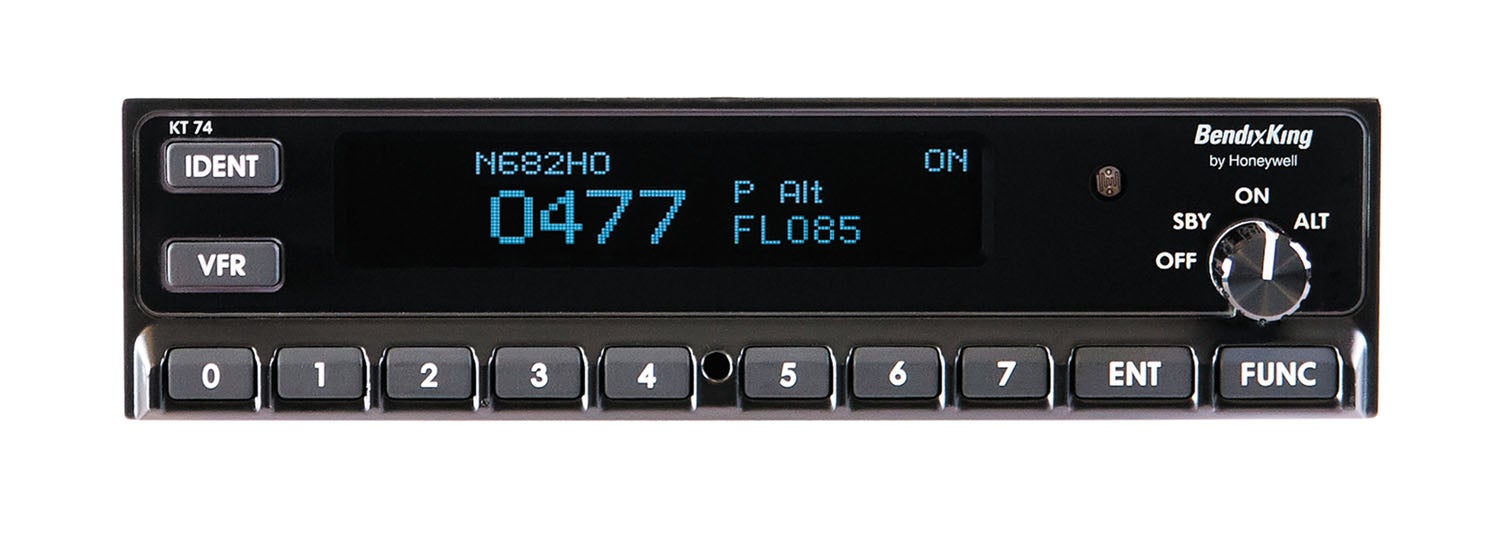
It is Trig Avionics that designed and builds the KT 74 for BendixKing, and still offers the rack-mounted TT31 and two-piece TT22/21 1090ES transponders. FreeFlight Systems sells the Trig TT22 as the RANGR FDL 1090 TX.
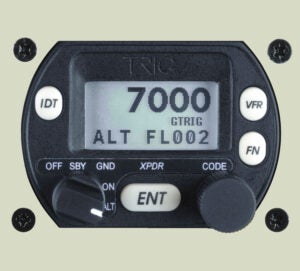
The BendixKing KT 74 and Trig TT31 were designed as slide-in replacements for the King KT 76A, KT 76C and KT 78 transponders, but all require the additional wiring for external GPS input. While we’ve always been fond of Trig’s quality and design, we think its current line of first-generation transponders are at a disadvantage without internal GPS, especially with newer-generation models from Garmin, Appareo and L-3, which substantially streamline the interface. But luckily there’s a workaround.
Trig offers the NexNav remote WAAS GPS receiver, plus external GPS antenna, which is a mandate-compliant system priced at $1100. It weighs less than 1 pound and can be mounted pretty much anywhere in the airframe. But add that to the price of the transponder—and the effort to install the receiver and antenna—and a model with built-in GPS might be the better option. We say put a sharp pencil on it.
Dynon Avionics
For channeling through its SkyView systems, Dynon offers the $2200 SV-XPNDR-261 remote transponder. It’s a 1090ES ADS-B Out unit that meets the 2020 mandate, but it will require input of the Dynon GPS-2020 or another TSO’d WAAS source. The Dynon unit—which outputs 250 watts—weighs just under 1 pound and connects to each SkyView display through an RS232 serial line.
The Dynon model is an obvious choice for newly installed or future installations of the company’s EFIS, and allows you to save a bit of panel space.
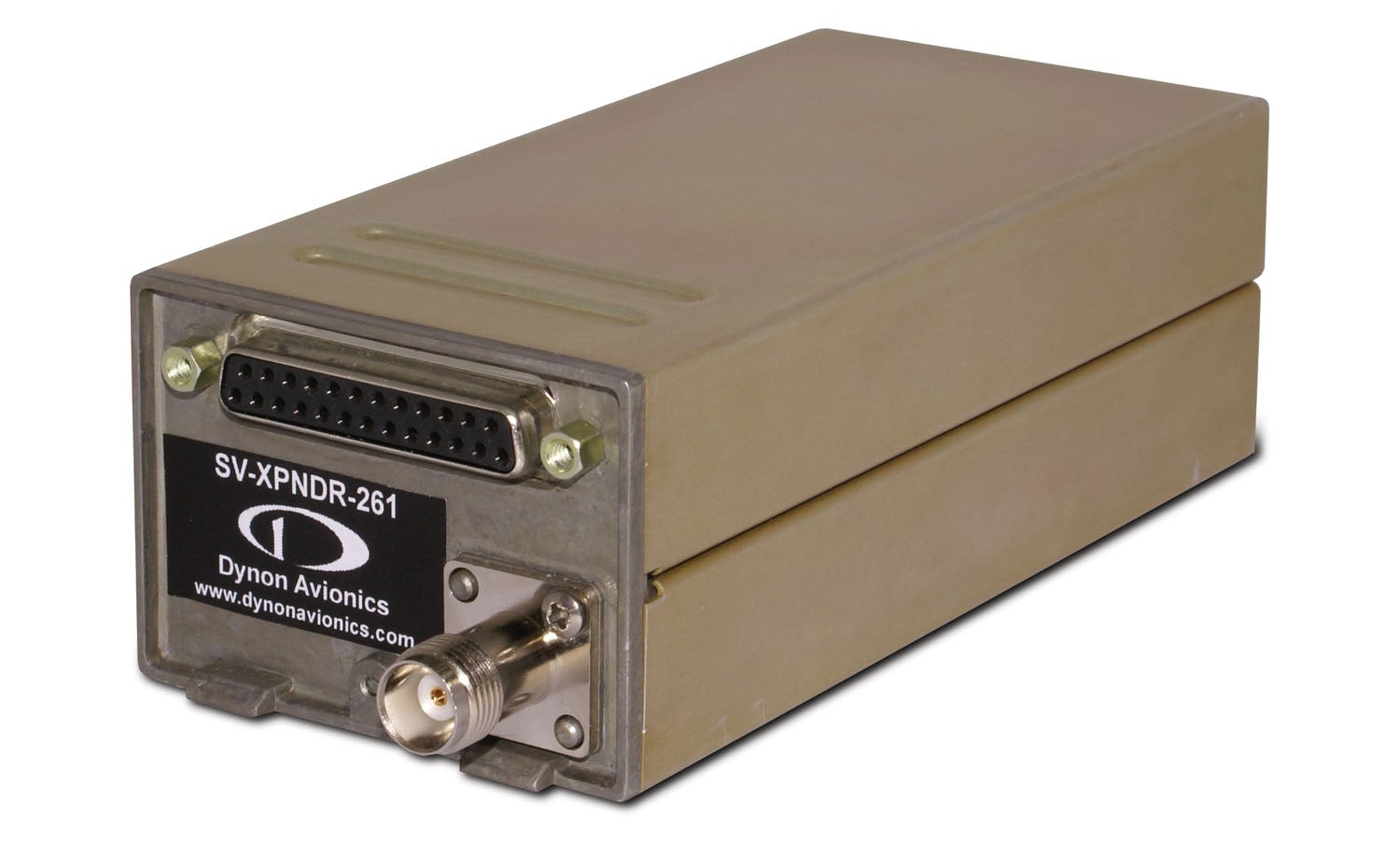
Garmin
Garmin’s latest GTX transponder product line may seem confusing at first, but that’s actually a good thing because there are a wide variety of configurations to choose from, depending on desired functions.
Garmin sold a lot of the GTX 330 Mode S units (as well as the Mode C GTX 327—more on that in a minute), and while it’s been discontinued, units can be upgraded to “ES” for ADS-B Out. It will need input from an approved position source since it has no WAAS GPS. The factory upgrade cost is $1200.
The GTX 330 was replaced by the $2995 GTX 335, an entry-level ADS-B Out model. A version of that has internal WAAS GPS and has a list price of $3795. Neither version has ADS-B In. You’ll need to buy the GTX 345 for that, which also comes standard with a Bluetooth wireless interface for streaming traffic and weather to a tablet running the Garmin Pilot or ForeFlight apps. It also works for displaying weather on the Garmin late-model portable navigators, which is the aera 660/GPS696/796 units.
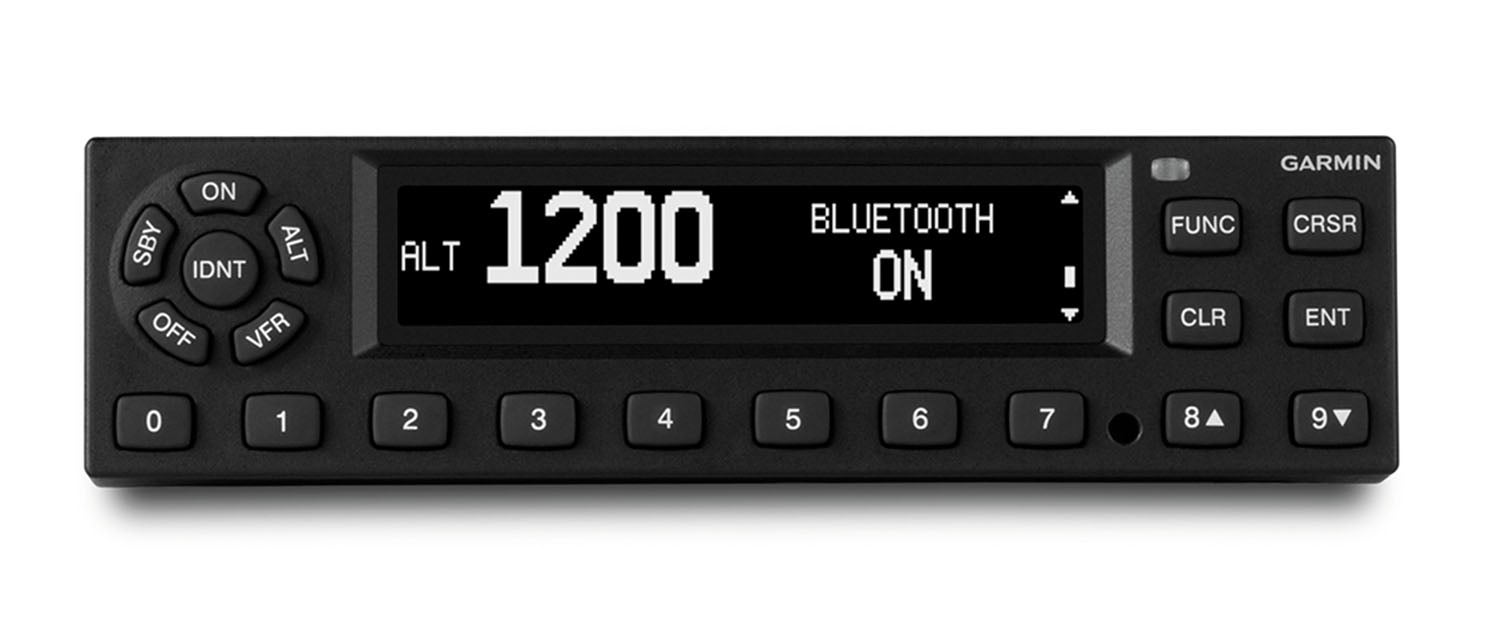
The GTX 345 with internal ADS-B In (these are dual-band receivers) interfaces with the GTN 750/650. You get traffic and weather display, including Garmin’s Trend Vector traffic mapping technology. You’ll get basic traffic display (no ADS-B symbology), plus NEXRAD images, METARs and TAFs on GNS 530W/430W navigators. The transponders won’t display on legacy (non-WAAS) GNS navigators. These are simply out of horsepower.
If you’re out of space for these rack-mounted units, Garmin offers remote versions. They are tuned directly on the screen of the GTN navigators, and on the displays of the Garmin G3X integrated avionics.
Garmin still offers a traditional Mode A/C unit with the $2295 GTX 325. (The minimum advertised price is $1995). It replaces the popular GTX 327—and is essentially the same unit—but carries the GTX 335/345 display and button layout. It would be a good choice if you already have an ADS-B Out solution but an older Mode C transponder that’s bitten the dust. It’s biggest competition? Probably used 327s.
Lynx NGT9000
A multifunction Mode S ADS-B transponder, the NGT9000 was developed by L3 Avionics, but the product is now supported under the ACSS division of L3Harris. As far as we know at press time, it’s still being manufactured. Some install support is also handled by Aspen Avionics, since the smart transponder is compatible with Aspen’s Evolution MFD for display of traffic and weather.
We’ve favored this system because it works well in stark panels since it does double-duty as an ADS-B Out transponder and also displays weather and traffic on its touch display.
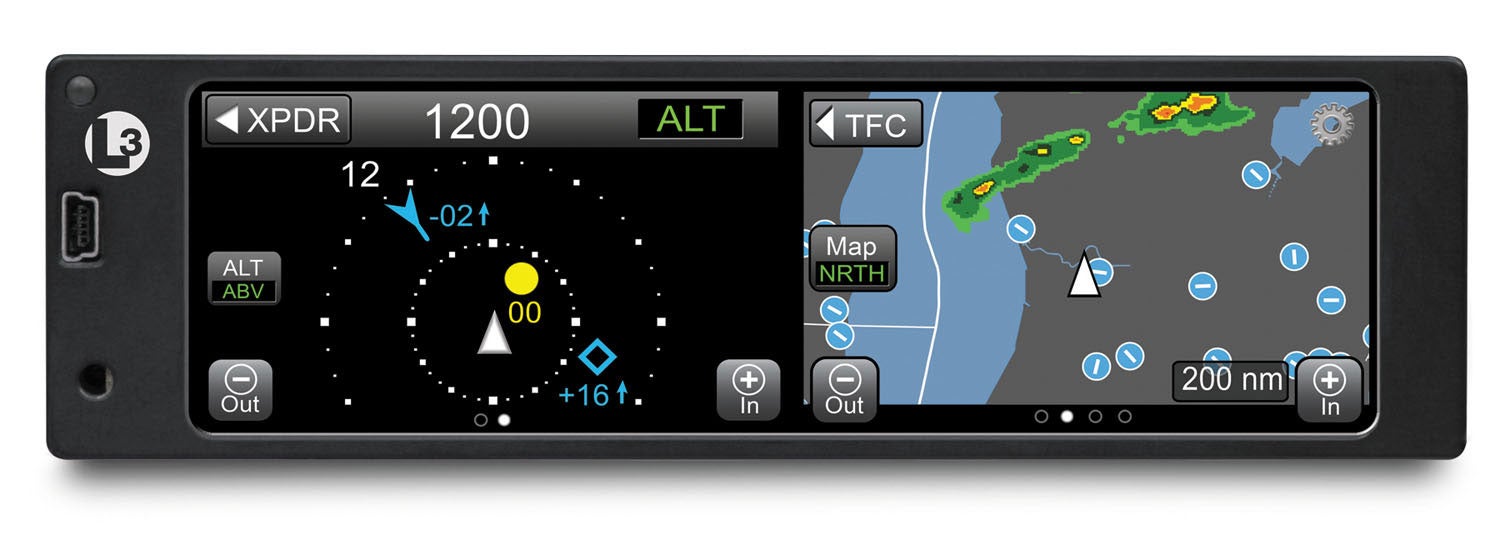
L3 never liked to call the NGT9000 a transponder because it does a lot more, but at its core that’s what it is—a Mode S Class A1/A1S transponder. The new term is smart transponder, with wireless connection to tablets and smartphones. The unit uses a remote wireless module for that and is compatible with a variety of third-party apps including ForeFlight, but not Garmin Pilot.
The NGT9000—which is available in a variety of flavors, including one with internal WAAS—fits in a standard 6-inch-wide radio stack and measures just under 2 inches high. It has a footprint similar to most other stack-mounted transponders. But unlike most transponders, the NGT9000 has a multifunction touch color display for weather and traffic overlay.
If you’re used to eyeballing large EFIS displays, the NGT9000 will be small by comparison. The data is divided between two drag-and-swipe touchscreens, and yes, at under 2 inches tall, the NGT9000’s display may not be the best way to view all that data. Still, think utility and the unit has plenty of it. We wish it could accept position data from an existing GNS, GTN or Avidyne navigator so you don’t have to buy the version with the GPS option, but it can’t. The GPS-equipped model can grab the WAAS signal from the existing WAAS antenna, at least, so you don’t have to install another antenna. That’ll save some install time, even though you’ll need to buy an antenna signal splitter. The GPS Networking LDCBS series is one for around $400.
A feature we like in the system’s latest software is ATAS aural alerting. ATAS surveys and issues traffic alerts for airborne traffic targets at all altitudes, making it especially useful in the traffic pattern. Frequency congestion results in nuisance alerts, so some TAS and TCAS systems won’t scan for traffic below 500 feet unless they’re connected to external mode sensors like landing gear squat switches and airspeed sensors. With its ATAS, the NGT9000 self-filters terminal area traffic and gives collision alerts down to ground level. Worth noting is a distinct advantage to ADS-B traffic minders compared to TAS simply because of a more complete picture of the traffic threat. Using predictive algorithms, the NGT9000 knows where the threat aircraft is turning, what its exact WAAS GPS position is and precisely where it’s going to be in relation to the host.
The system has two sensitivity levels. In the terminal mode (below 2000 feet AGL) you’ll get traffic alerts within 12.5 seconds prior to what’s called the closest point of approach (CPA) within 750 feet horizontally and 300 feet vertically. En route (above 2000 feet), the vertical sensitivity increases to 500 feet. If the CPA is greater than two miles or greater than 850 feet vertically, it won’t issue an alert.
You’ll have to wire the unit to an audio panel’s switched or unswitched audio inputs, but with the ATAS alerting you’ll hear “Traffic, three o’clock, one-half mile,” as an example. This obviously can save some time scanning out the windscreen. If ADS-B traffic isn’t enough, there’s a version of the NGT9000 with a built-in TAS receiver. That will require a top-mounted antenna, in addition to the traditional L-Band antenna.
If your kit has a WX500 Stormscope, the NGT9000 will work with it. It connects with an RS232 serial interface, and the Stormscope is controlled and displayed on a dedicated page in the NGT9000. You can view cell mode or strike mode, overlay lightning data on the map page, plus control the 200-mile range. Since the WX500 can drive two displays via its twin serial output ports, you can still keep it connected to an existing system if you have one.
Sandia Aerospace
New Mexico-based Sandia has two transponders. The $3200 STX 360 Sentinel has ADS-B Out and In, plus an LCD color display traffic and FIS-B METAR. There’s also wireless Bluetooth for more complete FIS-B weather display. There’s a remote version—the STX 360R. At press time, certification is pending.
But for Mode A/C ops (no ADS-B Out), the STX 165 is fair game. It’s a space-saver with a ½ 3 ATI bezel, and has an OLED display that does well in sun-splashed cabins. What we really like about the STX 165 is its built-in altitude encoder. It’s also equipped with a pressure altitude display, a three-function timer and has an option for OAT probe input.
The STX 165R is the remote version for $1800. It works with MGL, GRT, Dynon and Advanced Flight displays. It’s lightweight, at 1.16 pounds, and only draws 200ma of current at 28 volts.
TQ-Aviation
You might not have heard of German-based TQ, but its avionics ride aboard airliners, including Airbus and others. At AirVenture 2020, German-based TQ-Aviation was showing its newly certified KTX2-S transponder. It’s a Mode S, Class 1 unit and has a high-contrast TFT color display. It fits in a small instrument cutout, so it saves space. We suspect you’ll see more products from this company as it ventures deeper into the GA market.
Conclusion
If you’re installing your own transponder, remember that it will need to be certified per the FAR’s two-year transponder check. Same with the altitude encoder, if you’re installing a new one.
In all, there are good solutions on the current market. If you’ve already installed ADS-B Out (maybe you have a skyBeacon 978 UAT solution, for example) and need to replace a failed Mode A/C transponder, we favor the Garmin GTX 325. We also like the Sandia STX 165 because it has a built-in encoder, smart features and saves space. As we reported in the sidebar, keep your eyes open for a well-maintained Garmin GTX 327. It could be the ultimate money saver.
If you need both a transponder and compliant ADS-B Out, our top pick is the all-in-one Garmin GTX 345 series. With wireless Bluetooth, compatibility with Garmin Pilot and ForeFlight apps, plus a rugged, no-nonsense user set it’s obvious why shops report that it’s the top-selling ADS-B solution to date.
Photos: Larry Anglisano and courtesy the manufacturers.












